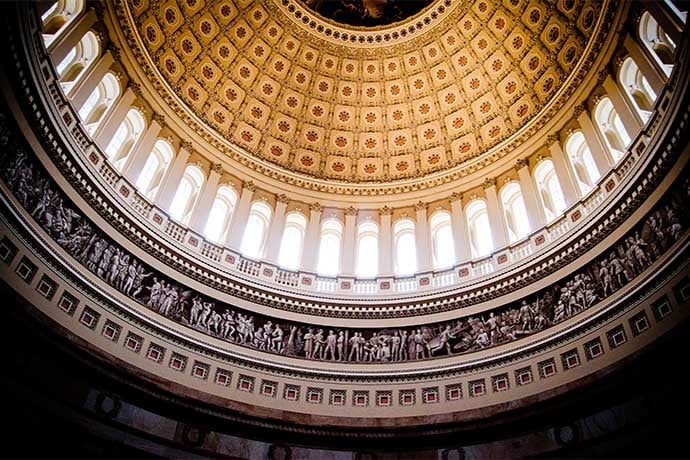The contest is open this year from July 18 through November 2, 2016. Winners are announced in each of the House districts for the US Congress. In 2016, that’s 180 districts in 42 states. That’s 180 potential winners.
The contest website includes links to see if your House district participates and, if not, to request they join the contest. (And, if you’re outside the US, you might want to look online to see if your local, state, or federal governments offer a similar contest. If they don’t? Maybe send an email with a link to the US contest, at the bottom of this article, and ask if they could do the same.)
You can participate if you’re 13 years old or older by the contest sign up date of July 18, 2016. You must be eligible to attend high school in the district you compete in. Teams must have at least two students who live or attend high school in the district they compete in. And teams are limited to four people.
You also don’t have to do a phone or tablet app. Most contestants do, of course. But you’re free to create a website if that works. Apps (or websites) don’t have to be 100% perfect. You must have enough functionality to prove your idea works. The goal is to encourage you to try programming.
Winners for 2015 created apps to send games to your friends (Charechat), use product bar codes to check if you might be allergic to ingredients (Allergy App), practice math concepts like the Pythagorean Theorem (Number Ninja), make voting as easy as posting on Instagram (InstaVote), and many more. You can browse the list of 2015 winners for ideas as you think up your own.
In looking through the past winners, people created apps by themselves or in large teams or with a friend. Probably you can find someone to help come up with a great idea and then turn it into an app.
Your project is judged based on creativity, how well you implemented your ideas, ease of use, and the excellence of your coding and design skills. Judges are local technologists, software companies, college professors, and others with software development experience.
The contest also encourages people who have never coded before. App Inventor, for example, is software designed to make it somewhat easy to create an app with no coding experience. There are other tools and many resources online where you can learn how to create apps. Some are linked below this article.
To participate, you and any team members go to Challenge.gov and register. When the contest opens, you can search Congressional App Challenge and look for the listing for your district. Then you upload your app and a 1-4 minute demonstration video to explain the benefits of your app and how it works. There’s also a process if you need to update your app submission.
This contest is a perfect summer project, a great way to fill in time and have some fun with programming and learning about technology without too much pressure.
Learn More
US Congressional App Challenge
http://www.congressionalappchallenge.us
http://www.congressionalappchallenge.us/about-2/
http://www.congressionalappchallenge.us/faq-for-students/
http://www.congressionalappchallenge.us/educational-resources/for-students/
US Congressional App Challenge: Find Your District
http://www.congressionalappchallenge.us/participating-districts/
http://www.house.gov/representatives/find/
http://www.congressionalappchallenge.us/student-request-for-member-participation/
2015 Congressional App Challenge Winners
http://www.congressionalappchallenge.us/2015-winners/
CA-18 Anna Eshoo Challenge (Example)
Here are some materials to show how one district fared in this contest in 2015. On Eshoo’s Challenge.gov page, click the Solutions link on the left side to see entries, not only her local winner. If you don’t know, Eshoo represents much of Silicon Valley so there’s lots of entries.
http://www.castilleja.org/page.cfm?p=940117&newsid=4037
https://www.challenge.gov/challenge/congressional-app-challenge-ca-18-rep-eshoo/
App Inventor
http://appinventor.mit.edu/explore/
http://appinventor.mit.edu/explore/get-started.html
http://appinventor.mit.edu/explore/ai2/beginner-videos.html
http://appinventor.mit.edu/explore/ai2/tutorials.html

